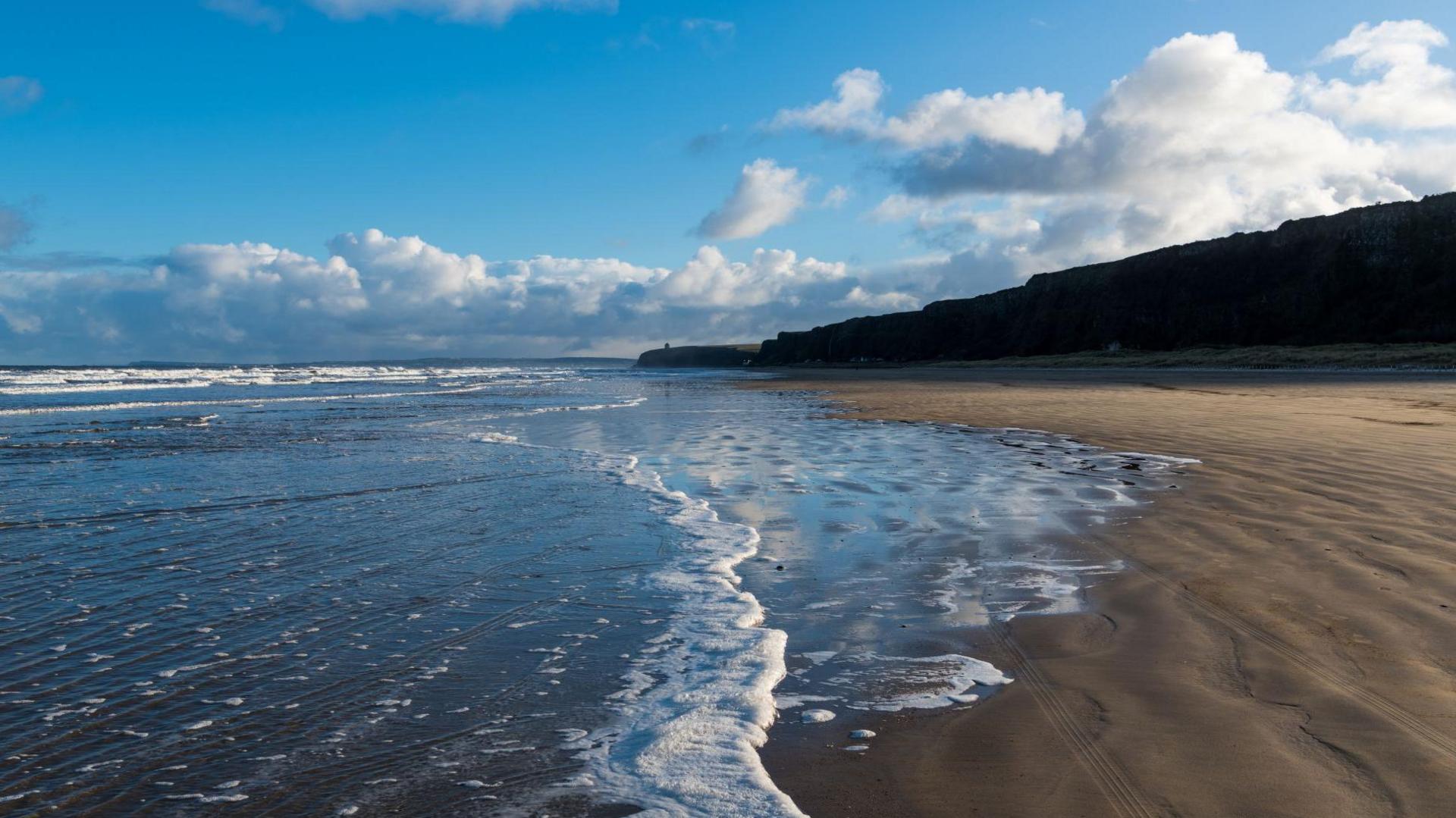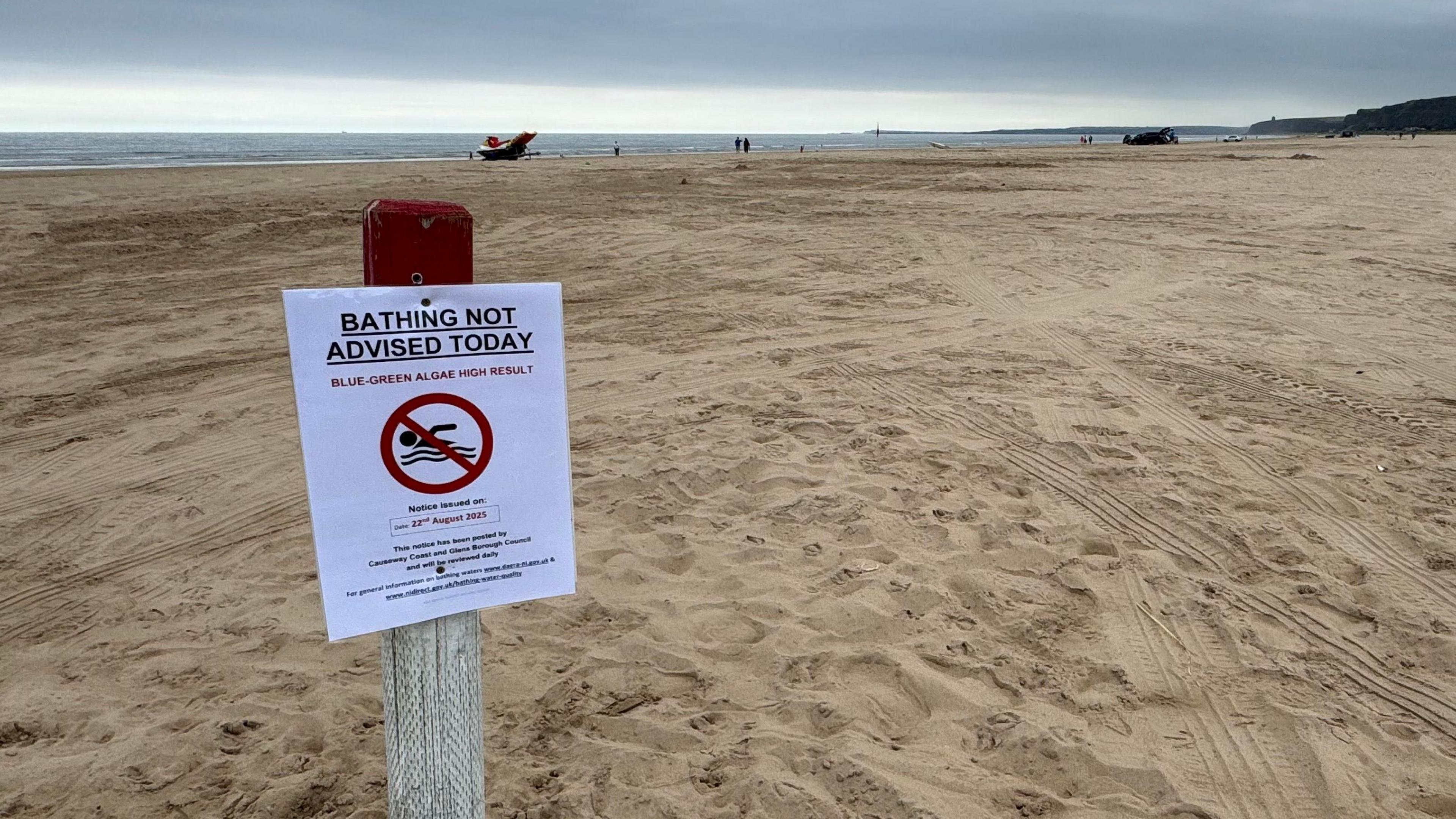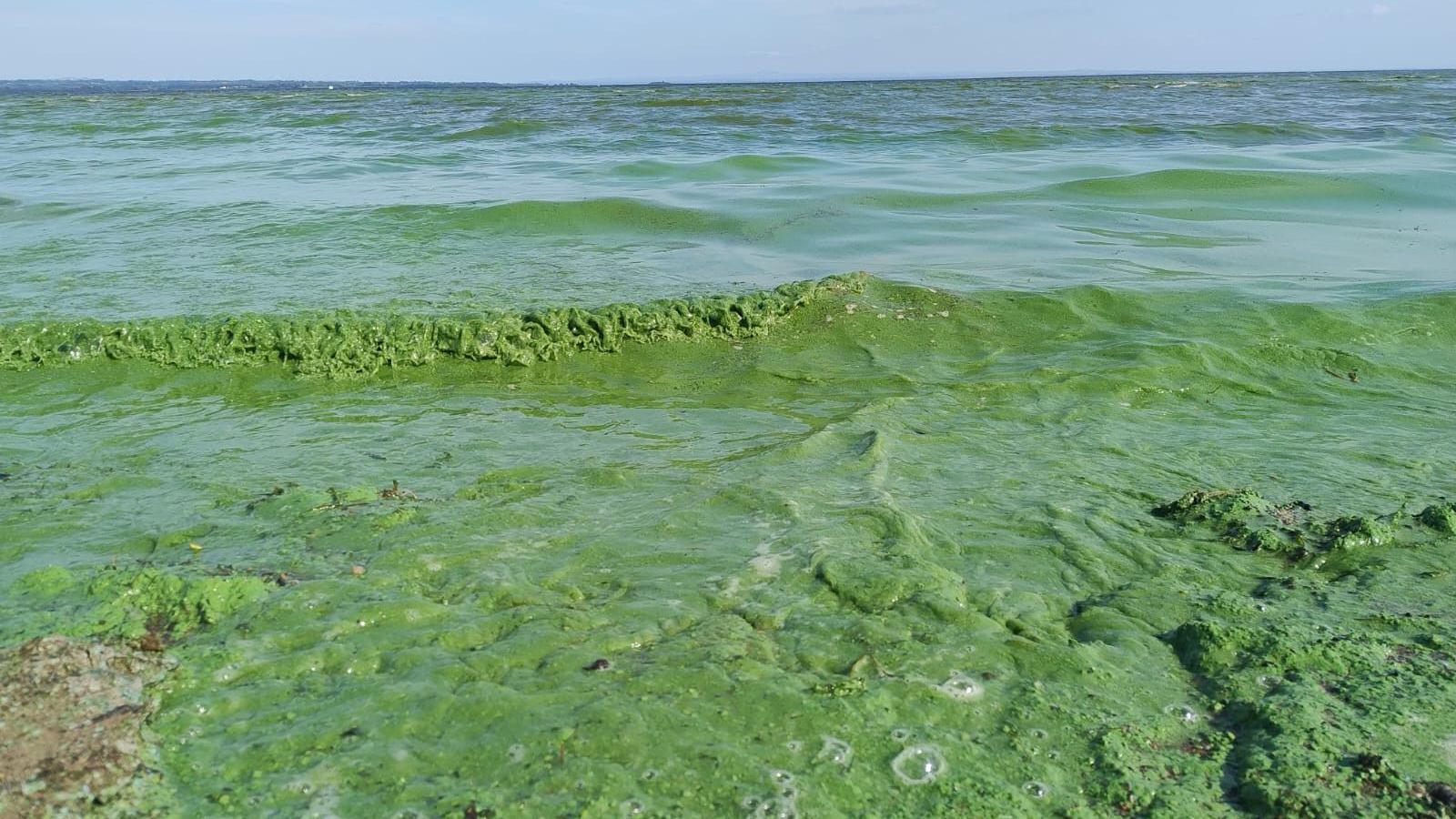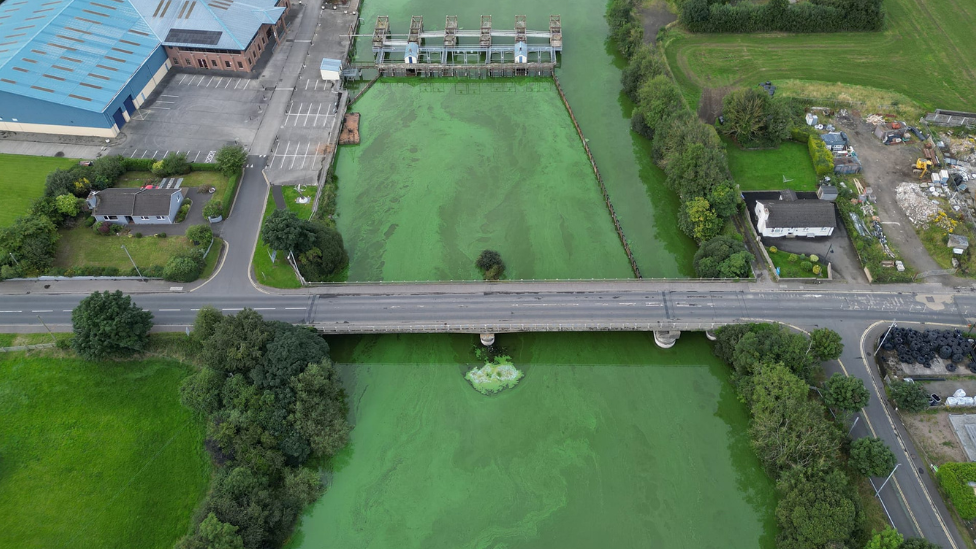Bathing ban at north coast beach is lifted

Toxic algae was found at Benone Strand on Thursday
- Published
A bathing ban at a popular north coast beach due to the presence of blue-green algae has now been lifted.
High levels of the potentially toxic algae were found at Benone Strand on Thursday.
The Department of Agriculture, Environment and Rural Affairs (Daera) said blue-green algae was no longer a risk.
A number of reports of the algae in loughs and waterways in Northern Ireland have been made over the past few months, particularly at Lough Neagh.
Temporary signage at Benone advising against bathing has now been removed.

Signs warning against swimming had been erected along the beach
The public has been advised to check the NI Bathing Water Quality Dashboard, external and on-site signage for the latest updates.
Blue-green algae has been detected more than 100 times across Northern Ireland since the start of the year, with the majority of sightings in Lough Neagh and the Lower Bann, as well as Lough Erne.
Agriculture and Environment Minister Andrew Muir called for more support from his Stormont Executive colleagues to tackle the issues at Lough Neagh.
What is blue-green algae?

The large algae blooms have been an ongoing problem at Lough Neagh
Blue-green algae, technically known as cyanobacteria, is a collection of microscopic organisms that are naturally present in lakes and streams.
Under certain conditions, blue-green algae can become abundant in warm, shallow, undisturbed, nutrient-rich surface waters that receive a lot of sunlight.
When this occurs, blue-green algae can form blooms that discolour the water, or produce floating mats or scums on the water's surface.
It can spread rapidly, with blooms beginning to double every seven to 14 days.
While some blue-green algae can produce toxins, it is not possible to tell by sight alone. For pets, livestock and wildlife, the blooms can be extremely dangerous.
If people are exposed to high levels of blue-green algae, either through contact with water blooms, swallowing the water or inhaling airborne droplets, may cause health effects.
These can include diarrhoea, nausea or vomiting, skin, eye or throat irritation; and allergic reactions or breathing difficulties.
Read more here.
- Published20 August

- Published5 August 2024
